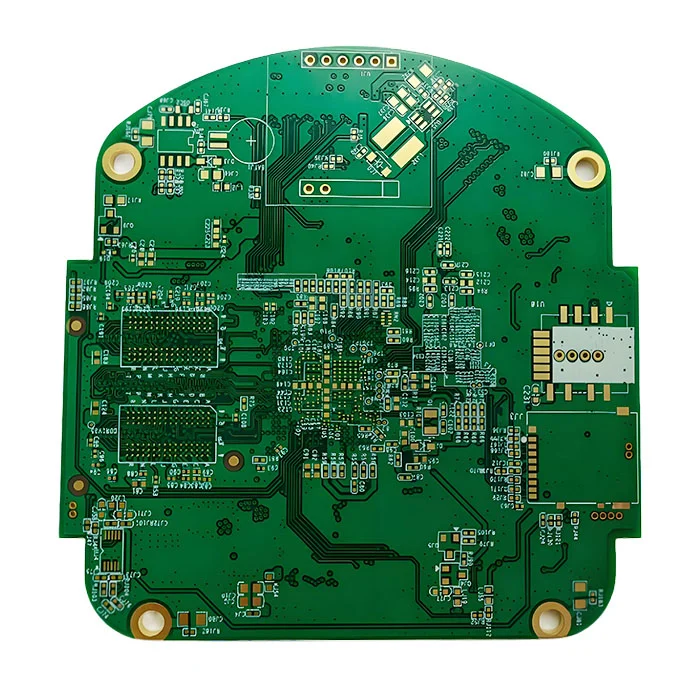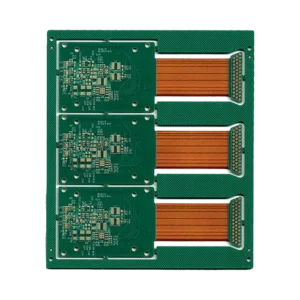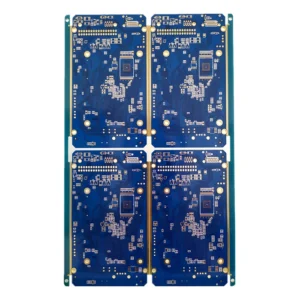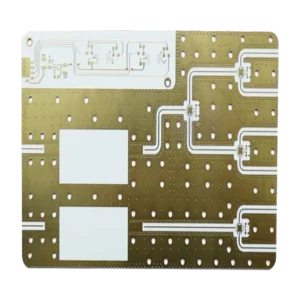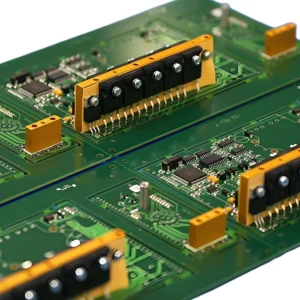RF Microwave PCB with Ro4003c
$65.90
RO4003C, utilized in RF microwave PCBs, is a high-performance thermoset laminate dielectric material, featuring excellent electrical, thermal, and mechanical properties. With superior high-frequency performance, RO4003C PCBs are important in telecommunications, aerospace, automotive, and various electronics.
Shipping fee and delivery date to be negotiated. Send inquiry for more details.
Your payment information is processed securely. We do not store credit card details nor have access to your credit card information.
Claim a refund if your order is missing or arrives with product issues, our support team would deal with your refund within 24 hours.
| Layer Counts | 6L |
| Base Material | Rogers RO4003C |
| Board Thickness(mm) | 1.6mm |
| Max board size(mm) | 570*670mm |
| PCB size tolerance | ±0.2mm |
| Min. Hole Size | 0.15mm |
| Min. Line Width | 4mil |
| Copper Weight | 1oz |
| Surface Finish | ENIG |
| Certificate | UL, RoHS, ISO, ISO9001, ISO13485, IPC610, and REACH |
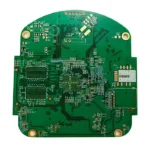 RF Microwave PCB with Ro4003c
RF Microwave PCB with Ro4003c
| 5 star | 0% | |
| 4 star | 0% | |
| 3 star | 0% | |
| 2 star | 0% | |
| 1 star | 0% |
Sorry, no reviews match your current selections
Questions & Answers
1. Does MOKOPCB support mass production?
Yes, we have the capacity to handle small to high-volume PCB production with automated assembly lines.
2. What are your payment terms?
T/T, Paypal, Western union, L/C ,ESROW
3. What factors impact radiation losses in RO4003C laminates?
Radiative in RO4003C mainly depend on dielectric loss, conductor losses, and high-frequency dispersion. Under RF and microwave frequencies, surface roughness and impedance mismatches increase losses, and the discontinuous layout also contributes to energy radiation.
4. What is the dielectric constant of RO4003C?
Ro4003c has a stable dielectric constant of 3.55 +/- 0.05 tolerance across a wide frequency range up to gigahertz frequencies.
5. Why does RO4003C have a ceramic filler?
The ceramic filler in RO4003C enhances thermal conductivity to help dissipate heat, improves CTE stability to reduce delamination risk, and increases mechanical rigidity. All in all, the ceramic reinforcement makes RO4003C more durable and reliable than unfilled laminates.
6. How small via holes can you drill on RO4003C RF microwave PCB?
We can drill a 0.15mm hole at the limit, and provide from 0.15mm to 5mm hole size to choose from.
7. How does RO4003C compare to PTFE-based materials?
RO4003C is cheaper and easier to fabricate than PTFE with greater thermal performance and high-frequency stability. However, PTFE has a lower loss tangent and a more stable Dk, which is superior for mmWave over 77GHz and offers better RF performance than RO4003C.
8. What soldering process works best with RO4003C RF microwave PCB?
RO4003C PCB is compatible with standard reflow, wave, and hand soldering. RO4003C has a ceramic-filled hydrocarbon resin that can withstand blistering and degradation under repeated thermal cycles.
9. What factors impact radiation losses in RO4003C laminates?
Radiative in RO4003C mainly depend on dielectric loss, conductor losses, and high-frequency dispersion. Under RF and microwave frequencies, surface roughness and impedance mismatches increase losses, and the discontinuous layout also contributes to energy radiation.

